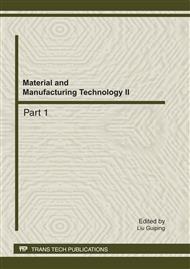p.323
p.328
p.333
p.338
p.345
p.350
p.355
p.359
p.364
Study on Dynamic Bifurcation of the Hindmarsh-Rose Neuron under Parameters’ Changing
Abstract:
In the thesis, the dynamic bifurcation characteristics of the Hindmarsh-Rose neuron are analyzed and discussed by the neurodynamic theory and methods. Under the stimulation of the current, the neuron’s discharge pattern changes from the resting state to the tonic firing, which needs the current’s amplitude reaching a certain value. Moreover the stimulation strength threshold has something to do with the parameter r of the neuron. When the stimulation current increases gradually, the general trend of the membrane potential’s ISI is the gradual decrease(The discharge frequency of the neuron increases gradually). The discharge patterns of the neuron are changed, and the neuron undergoes the process of dynamic bifurcation. This bifurcation process of the neuron has something to do with the parameter r. and different parameter r causes different bifurcation. Under a certain current’s stimulation, the HR neuron has plenty of discharge patterns with the parameter r’s changing. From the view of neurodynamics, the discharge patterns of the HR neuron are changed, in substance, the HR neuron undergoes dynamic bifurcation process. Therefore, The HR neuron’s discharge patterns can be adjusted and controlled by the stimulation current I and the parameter r. This investigation is helpful to know and investigate deeply the dynamic characteristics and the bifurcation mechanism of the HR neuron; and it provides a certain theory assist to investigate many neurons’ synchronization and the neural network’s synchronization.
Info:
Periodical:
Pages:
345-349
Citation:
Online since:
September 2011
Authors:
Keywords:
Price:
Сopyright:
© 2012 Trans Tech Publications Ltd. All Rights Reserved
Share:
Citation:


